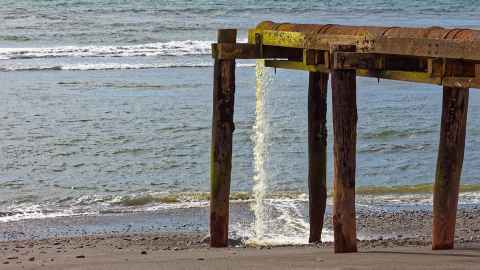Growing population in changing climate makes Three Waters critical
5 November 2021
Opinion: The need for water sector reforms and greater co-operation throughout the water industry has never seemed more urgent, explains Lokesh Padhye.

Analysis: As the Government has decided to go full-throttle on the three water reforms, it is important to understand the arguments from both sides. Glancing at some of the leading newspapers over the past week, it is evident that opponents of the reform are getting a lot more coverage than the supporters.
So does that mean the reforms are an ill-conceived idea by the Government and a waste of taxpayers dollars? Let’s look at the issue from the non-political point of view. The answer to the second part of the question will depend on the structure and planning of the reforms.
There are 67 council-owned and managed water service providers throughout New Zealand. On the surface, it looks logical as the councils are supposed to serve their population with drinking water, stormwater, and wastewater services, which are essential for maintaining the community’s health.
However, this fragmented structure has an inherent disadvantage of resource inequality as well as a lack of efficiency and performance. To appreciate the types of challenges fragmentation poses, it helps to review the background of the New Zealand water sector.
Out of the 67 water service providers, most serve fewer than 100,000 connected ratepayers, and many serve a much smaller population. There is a lot of research in the water industry worldwide that shows economy of scale is only possible at population sizes ranging from 100,000 to one million.
This means that building a world-class water management infrastructure would only be practical when your ratepayer population base is above a certain size. It helps to explain why so many water service providers in New Zealand are debt-ridden and averse to upgrading their existing infrastructure. It also explains why Auckland and Christchurch won’t have the same enthusiasm for the reforms as they have the required ratepayer base to make it work.
The necessity for an integrated, national approach for the management of Three Waters – drinking water, wastewater, and stormwater – cannot be over-emphasised, especially when water stress is increasing due to climate change and the increase in population.
Operational, managerial, and financial capabilities required for state-of-the-art water management solutions are often too expensive for smaller councils, resulting in suboptimal water quality and services.
Indeed, one in five New Zealanders is supplied with drinking water that does not meet the country’s drinking water standards intended to protect against microbial and chemical contamination, according to the Ministry of Health. That is an embarrassing statistic for a developed country.
Similarly, nearly a quarter of wastewater treatment plants in New Zealand are operating on expired consents, which means their wastewater discharge may not comply with the up-to-date environmental management solutions for that region, again putting ecological and public health at risk.
For stormwater management, the most vulnerable component of the three waters management to climate change, the situation is even grimmer. Not all service providers manage stormwater, and out of those who do, only half monitor stormwater quality.
Considering the above, it is no wonder that surface water quality nationally is declining, thousands of people are getting sick drinking contaminated water, and we are finding wastewater-discharge-associated contaminants in aquifers and other protected source waters.
I hope the above facts are enough to convince most of us that the current structure of New Zealand water sector is not working. However, there is one more critical aspect that is not explicitly mentioned in the proposed reforms. It is about research and development and global leadership.
As a country that often likes to compare itself to our Scandinavian peers, we are far behind in innovative practices, solutions, and regulations when it comes to the water sector. The approach we have is not forward-looking and results in us being followers of practices and regulations that are first adopted in other regions of the world.
For some, this offers a fail-proof mechanism, consistent with the risk-averse approach we have become to known for.
However, it also means that change in water practices for improving human and ecological health will reach our shores much later than the global leaders in the water sector. I certainly find that unacceptable. We should strive to lead and not follow the best water management and treatment practices.
The consolidation of water entities, if done correctly, will bring water equity and safety and also increased R&D activities through more resources and economy of scale.
The necessity for an integrated, national approach for the management of three waters (drinking water, wastewater, and stormwater) cannot be overemphasised, especially when water stress is increasing due to climate change and the increase in population.
It is in this light that the need for water sector reforms and greater cooperation throughout the water industry has never seemed more urgent.
Dr Lokesh Padhye is a senior lecturer in the Department of Civil and Environmental Engineering, in the Faculty of Engineering.
This article reflects the opinion of the author and not necessarily the views of the University of Auckland.
Used with permission from Newsroom: Growing population in changing climate makes Three Waters critical, 5 November 2021.
Media queries
Alison Sims | Media adviser
DDI 09 923 4953
Mob 021 249 0089
Email alison.sims@auckland.ac.nz